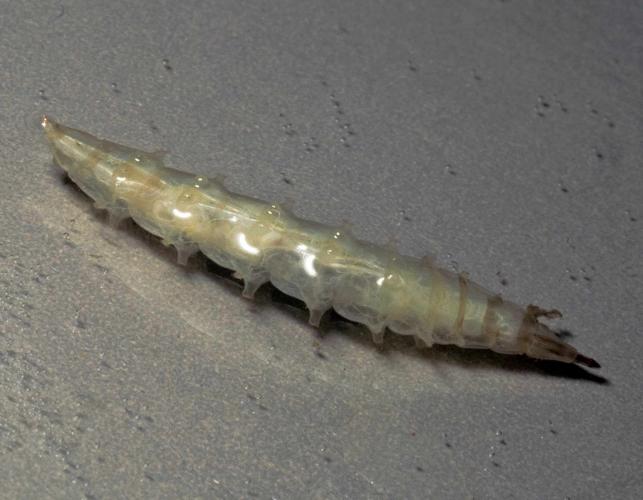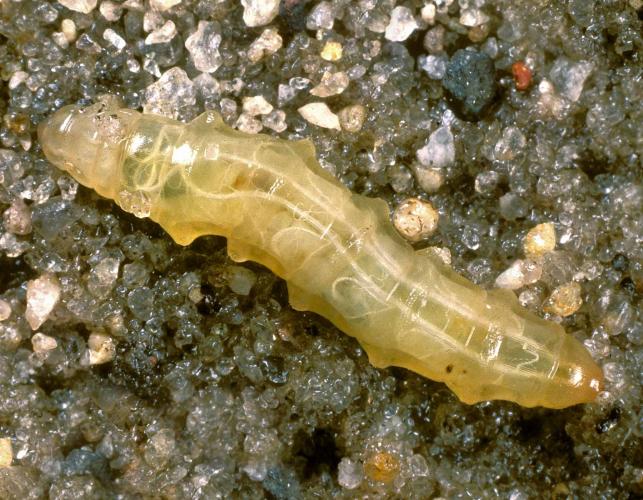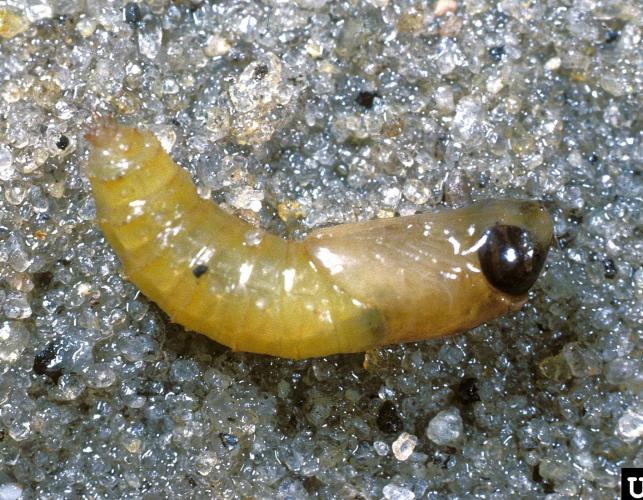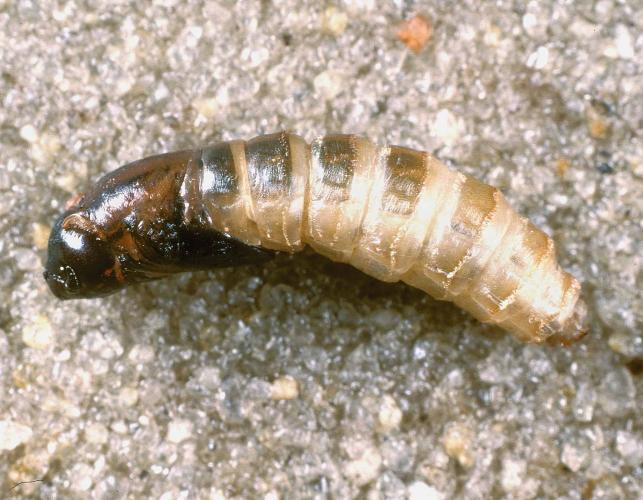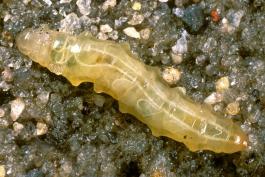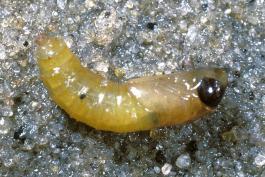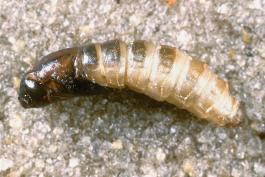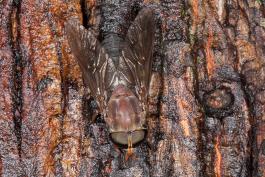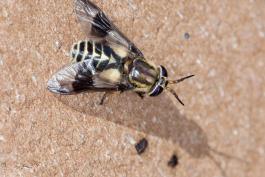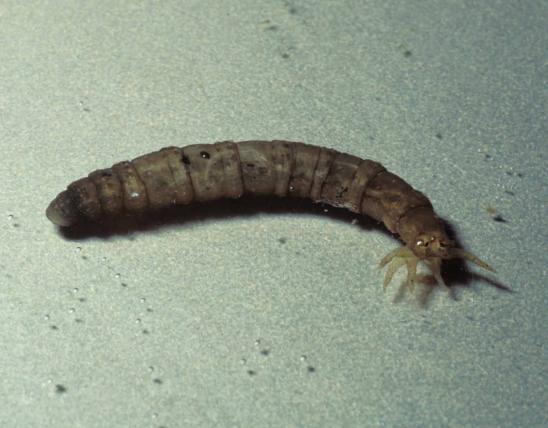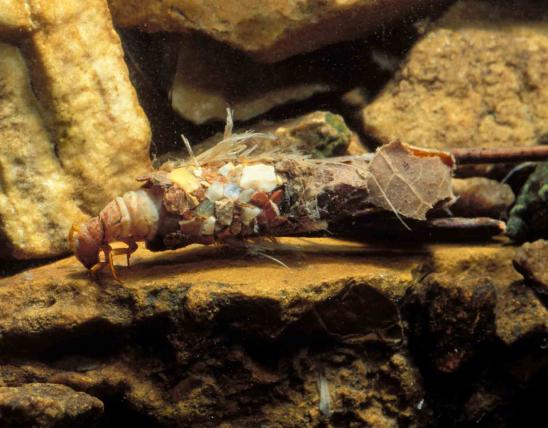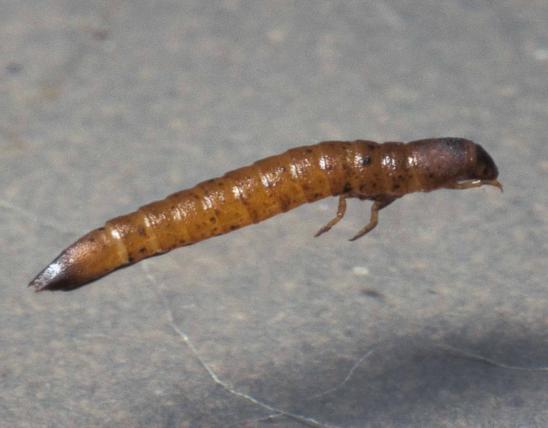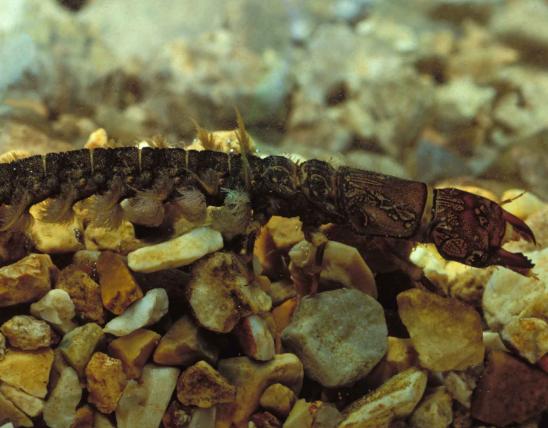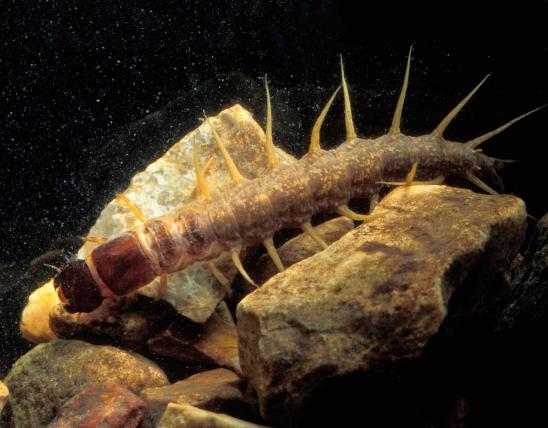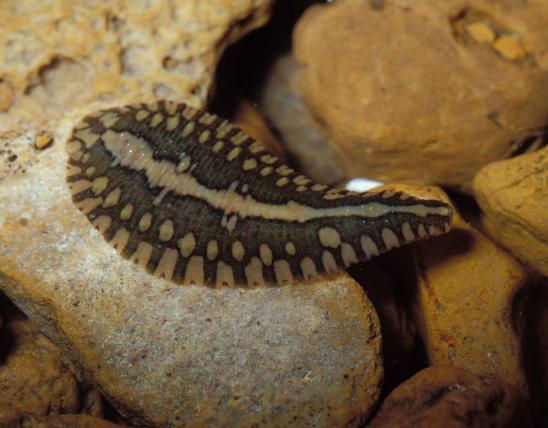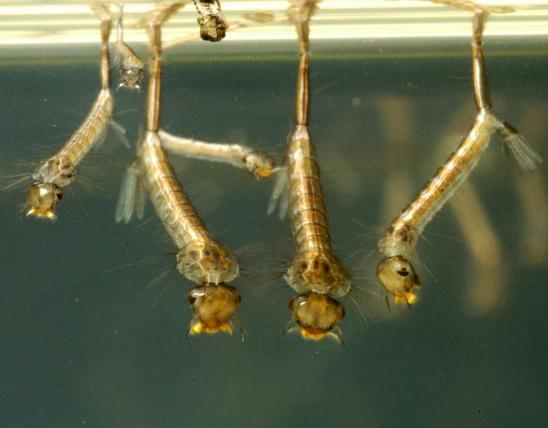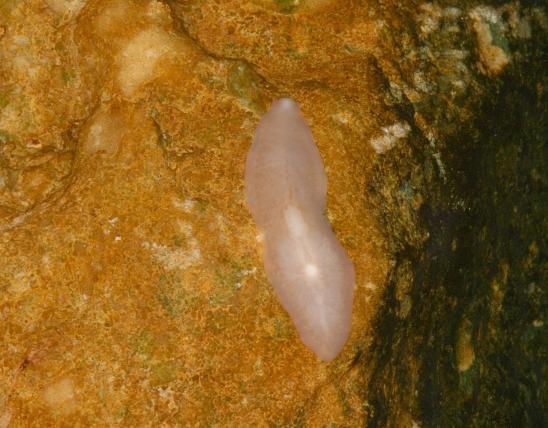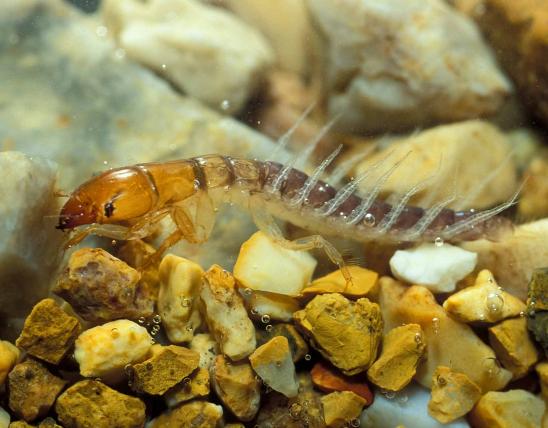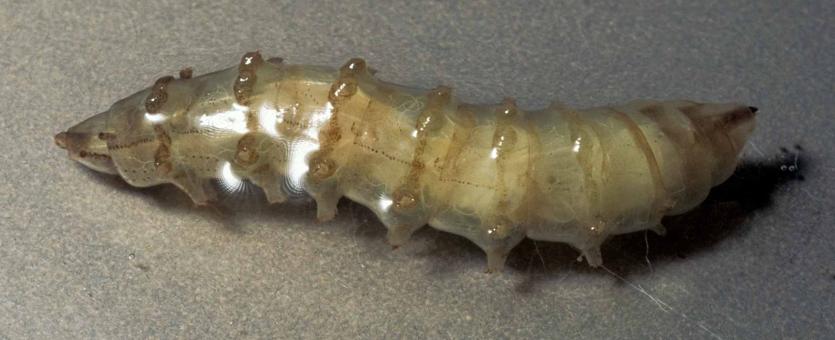
The larvae of horse and deer flies are fairly straight, segmented, wormlike maggots that are tan, whitish, or brownish. Several fleshy rings circle the body. They are robust, circular in cross-section, and taper at both ends. There are no true legs, although fleshy, nobby pseudopods or prolegs are present. In relaxed specimens, a thin, pointed breathing tube extends from the hind end to protrude above the water surface.
Horse and deer flies belong to the same family. Like other true flies, the adults have only one pair of wings, short antennae, and large compound eyes. Distinguishing them from other kinds of flies, horse and deer flies are stout and usually medium to large. Overall, most are drab browns, grays, and blacks, but many species have bright, iridescent, or rainbow-colored eyes, sometimes with spots or stripes. Horse and deer flies are notorious for drinking blood from cuts they make into their host’s skin.
Larva length: ¾ to 1½ inches. Deer fly larvae are usually smaller than horse fly larvae.

Statewide.
Habitat and Conservation
Most larvae are aquatic, living in streams, on the edges of ponds, or in wetlands, where they prey on insects and other small animals or (in some species) feed on detritus. Adults are strong fliers and can be found nearly anywhere. They are most common near streams and wetlands, where the females lay eggs. Females are also common around cattle, horses, deer, and other large mammals, from which they obtain the blood needed in order to make eggs.
Food
In some species, the larvae are voracious predators of other small animals, including insects, small fish, and more. Others eat detritus. Adults eat nectar and pollen from flowers. Females (but not males) also drink blood. They land softly on a vertebrate (such as a cow or a person), then use scissor-like mouthparts, to make an incision into the skin. They lap up the blood that seeps from the wound. Their saliva contains anticoagulants to keep the blood flowing.
Status
Common. Horse and deer flies are pests of horses, cattle, and other livestock, not only for the pain and frustration they cause for the animals, but also for the diseases they occasionally transmit. Because the wounds can keep bleeding long after the fly’s had its blood meal, an animal that’s been attacked multiple times can experience significant blood loss.
Life Cycle
Like all other members of the fly family, these go through complete metamorphosis, starting out as eggs, which hatch into grublike larvae (maggots), which grow, then pupate, then emerge as winged adults capable of reproducing. In horse and deer flies, mating swarms result in fertilized females, which lay eggs on plants or other objects overhanging water. The larvae live — sometimes for years — in water, then pupate and become creatures of the air.
Human Connections
Tularemia is just one disease that can be transmitted by these flies, though the most common problems they cause for people and livestock are painful, itchy welts. Because they are such determined attackers, they often don’t leave when swatted at.
Ecosystem Connections
The larvae help control populations of the many small animals they eat. The adults of some species are important pollinators. Several predators, including insectivorous birds, eat them, and certain wasps parasitize them. The horse guard wasp stings horse flies and uses them to feed its larvae.

